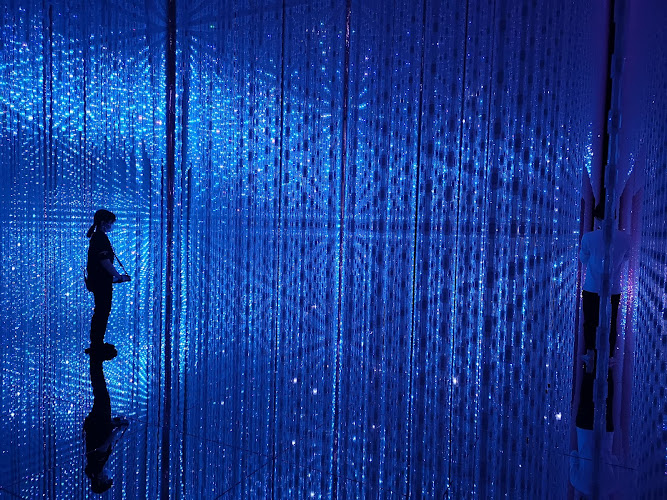About teamLab Planets
TeamLab Planets in Tokyo's Koto City offers an unparalleled journey into the realm of immersive art. This avant-garde museum challenges traditional notions of art appreciation, inviting visitors to become an integral part of the exhibits. As you wade through water-filled spaces and meander through living gardens, the boundary between observer and artwork blurs, creating a truly unique experience.
The museum's four expansive artwork spaces serve as canvases for teamLab's cutting-edge digital creations. Here, light, color, and sound converge to form ever-changing landscapes that respond to human presence. Visitors find themselves enveloped in swirling projections, their movements influencing the ebb and flow of digital rivers and the growth of virtual flora.
Perhaps the most captivating aspect of TeamLab Planets is its ability to engage multiple senses. The cool touch of water underfoot, the fragrance of blooming flowers, and the mesmerizing visual spectacles combine to create a fully immersive environment. This multisensory approach sets TeamLab Planets apart from conventional art museums, offering a more visceral and memorable encounter with contemporary art.
The two gardens within the complex further blur the lines between nature and technology. As visitors wander through these spaces, they become one with the surrounding flora, their presence affecting the digital projections that dance across petals and leaves. This symbiosis between human, nature, and technology encapsulates the essence of teamLab's artistic vision.
It's worth noting that the experience at TeamLab Planets can be quite different from what many expect from a traditional museum visit. Visitors should be prepared to get their feet wet - literally - and to engage with the art in ways they might not have anticipated. This unconventional approach has garnered both praise and criticism, making it a polarizing attraction that sparks conversation and challenges perceptions.
For those planning a visit, it's advisable to allocate ample time to fully immerse oneself in each installation. The transformative nature of the exhibits means that no two visits are exactly alike, encouraging repeat visits to experience the ever-evolving artworks. While the museum can get crowded, particularly during peak hours, the shared experience of wonder and discovery often adds to the overall atmosphere.
TeamLab Planets stands as a testament to the evolving nature of art in the digital age, offering a glimpse into a future where the boundaries between reality and virtual worlds continue to blur. Whether you're an art enthusiast, a tech aficionado, or simply curious about new experiences, this Tokyo attraction promises a journey that will challenge your senses and expand your understanding of what art can be.
Copyright © 2025 RealJourneyTravels.com. All Rights Reserved.


